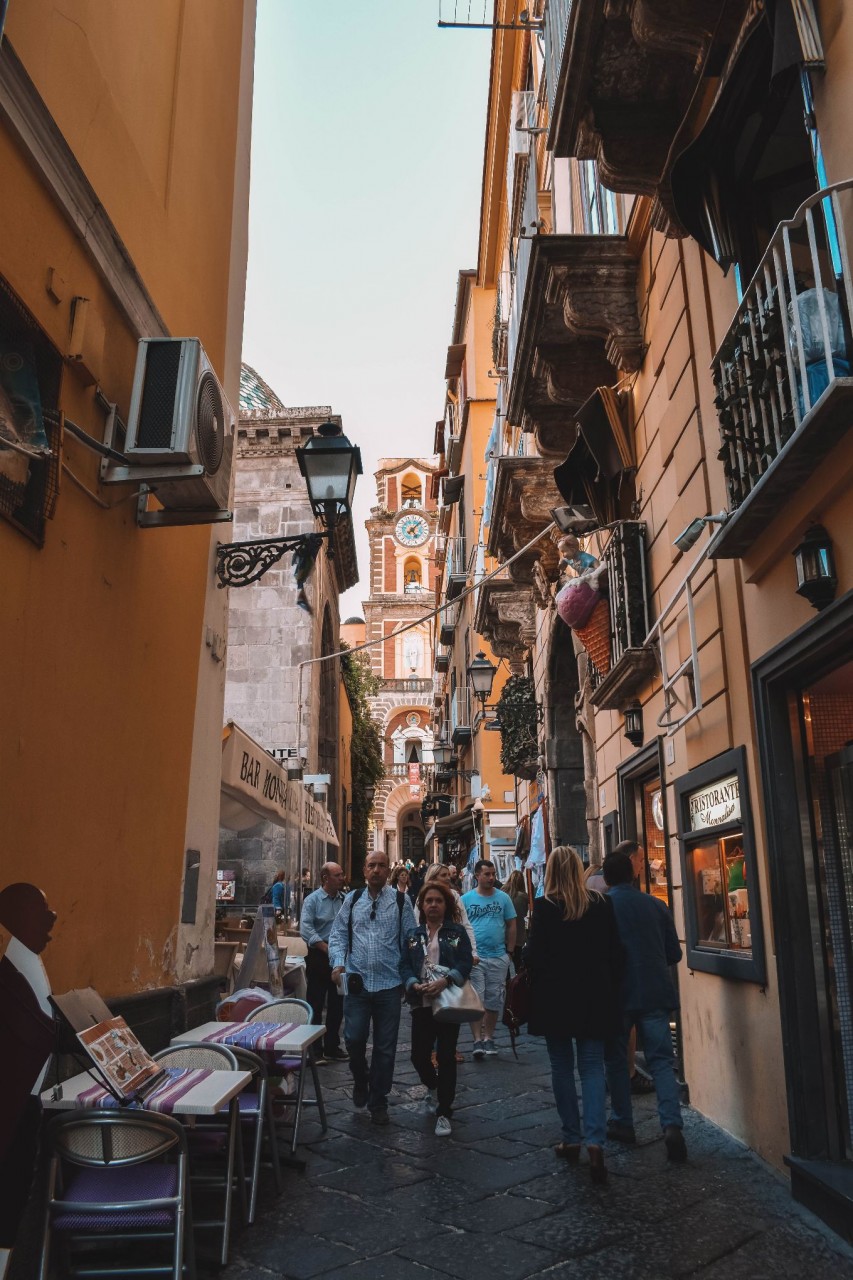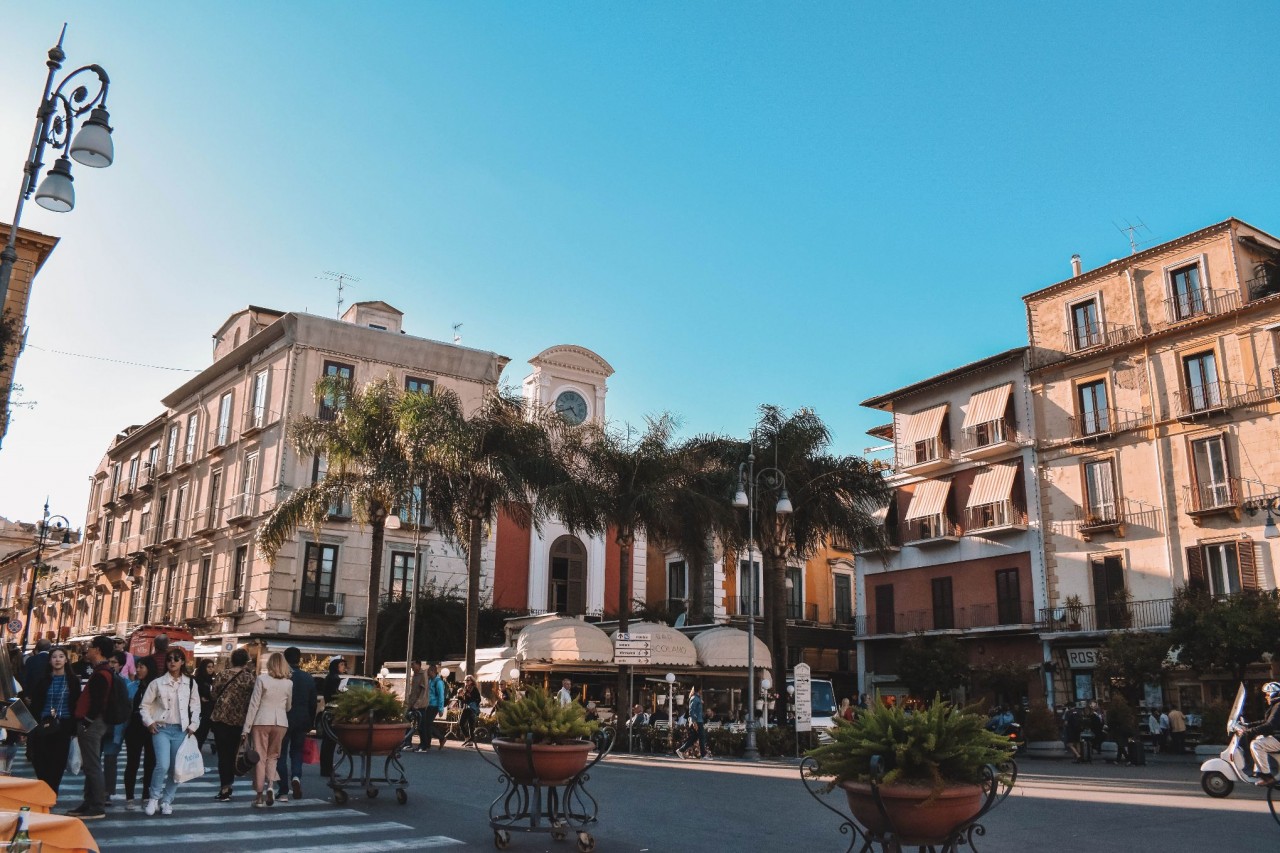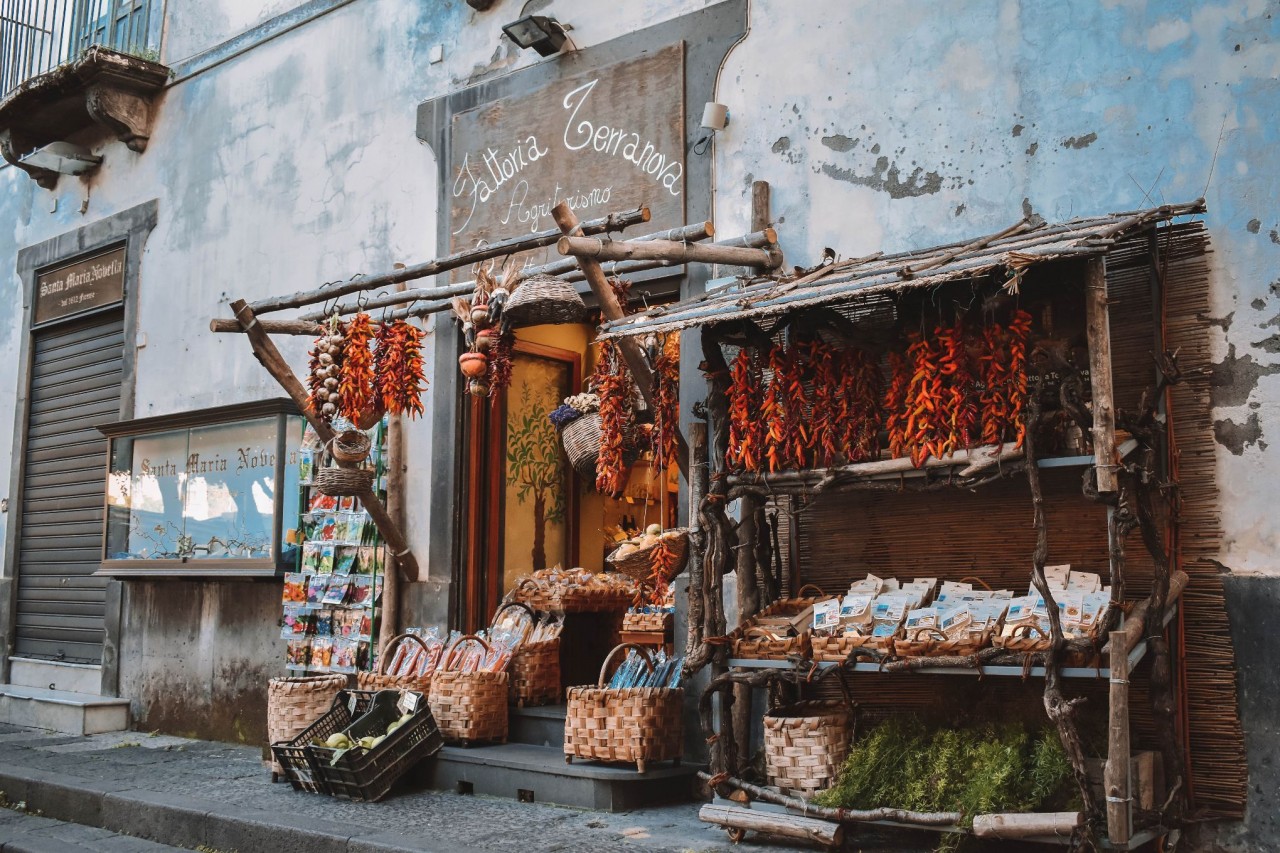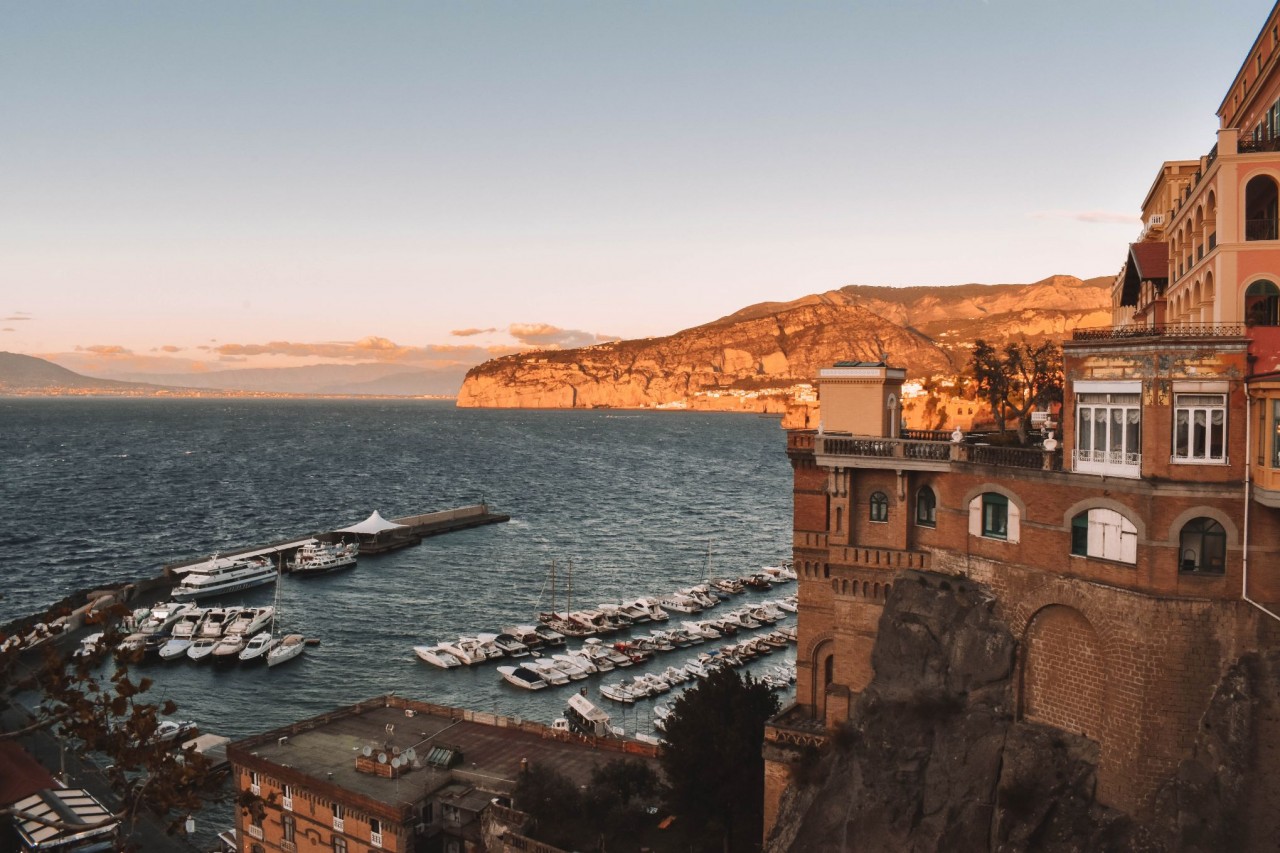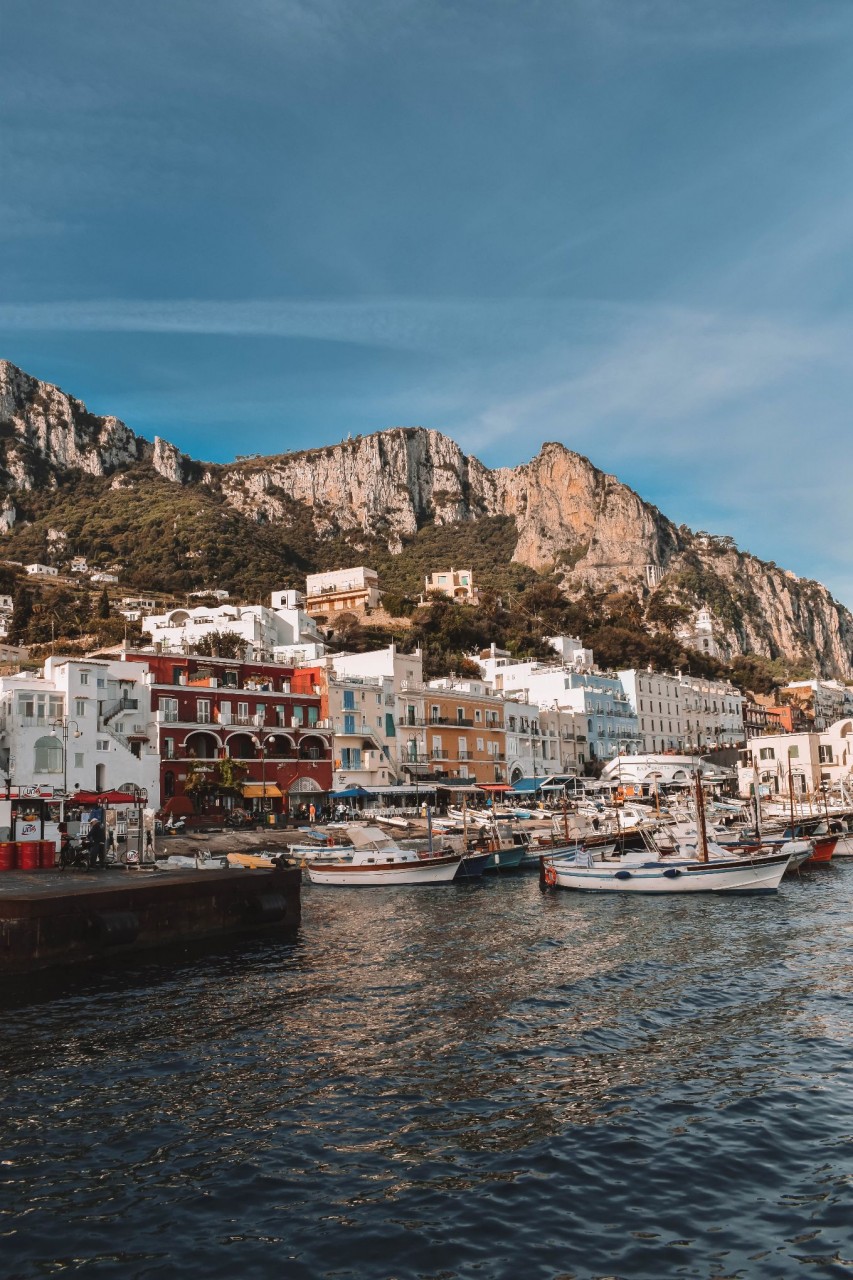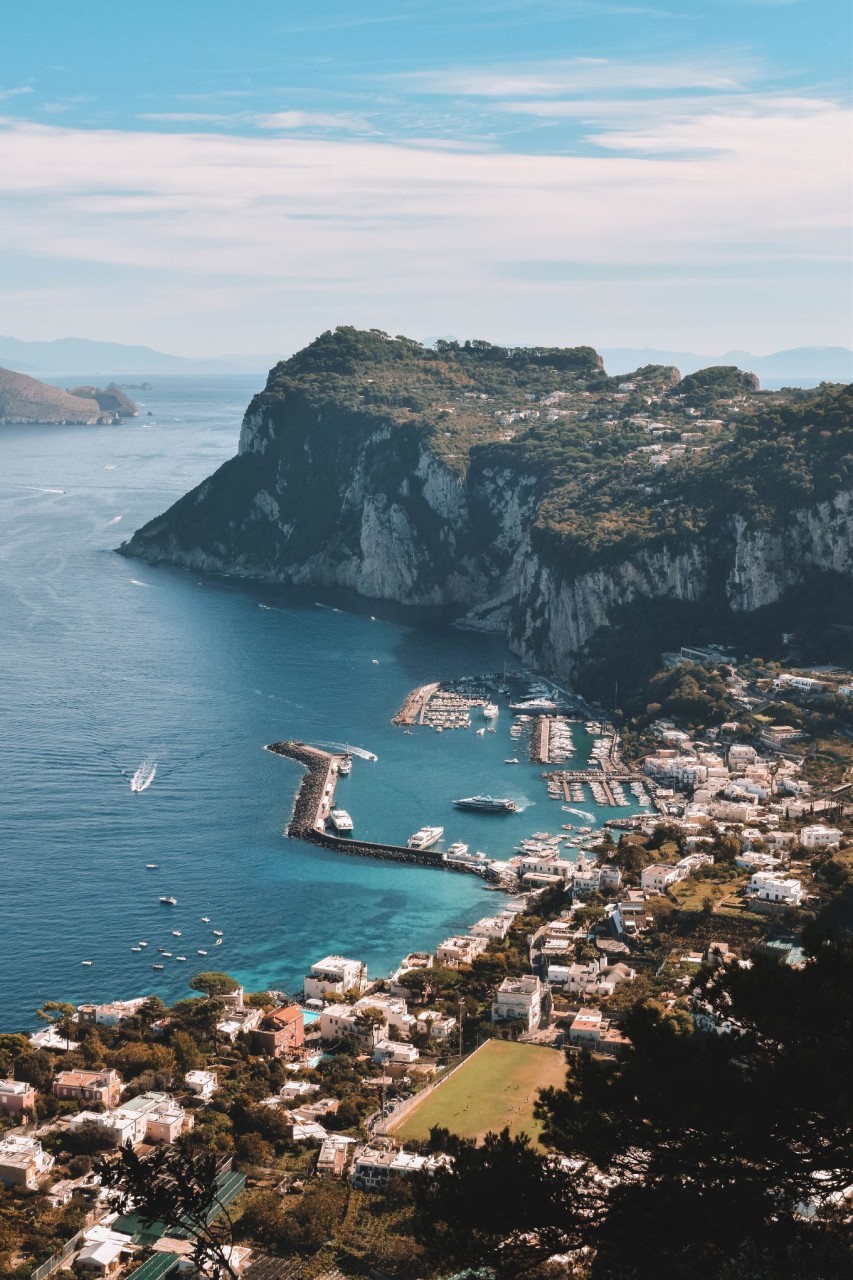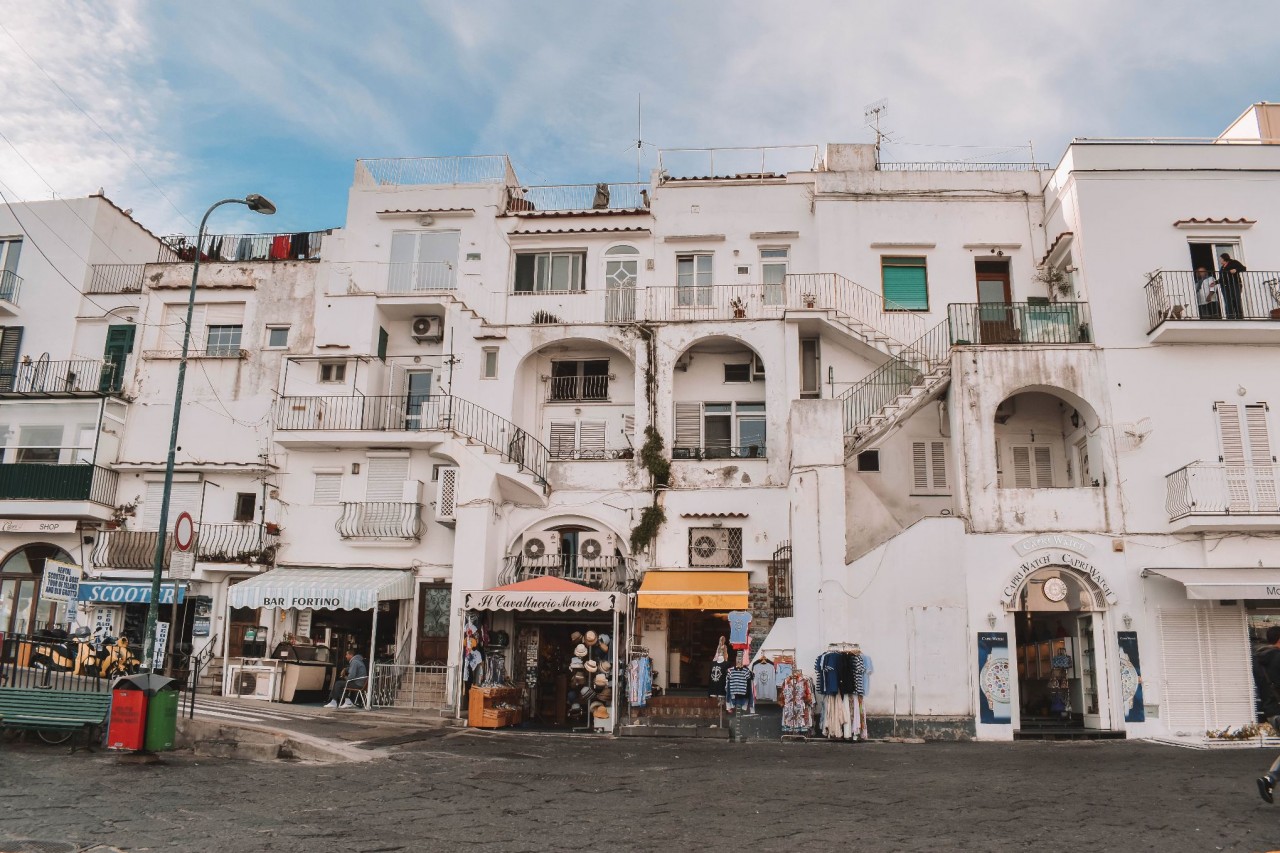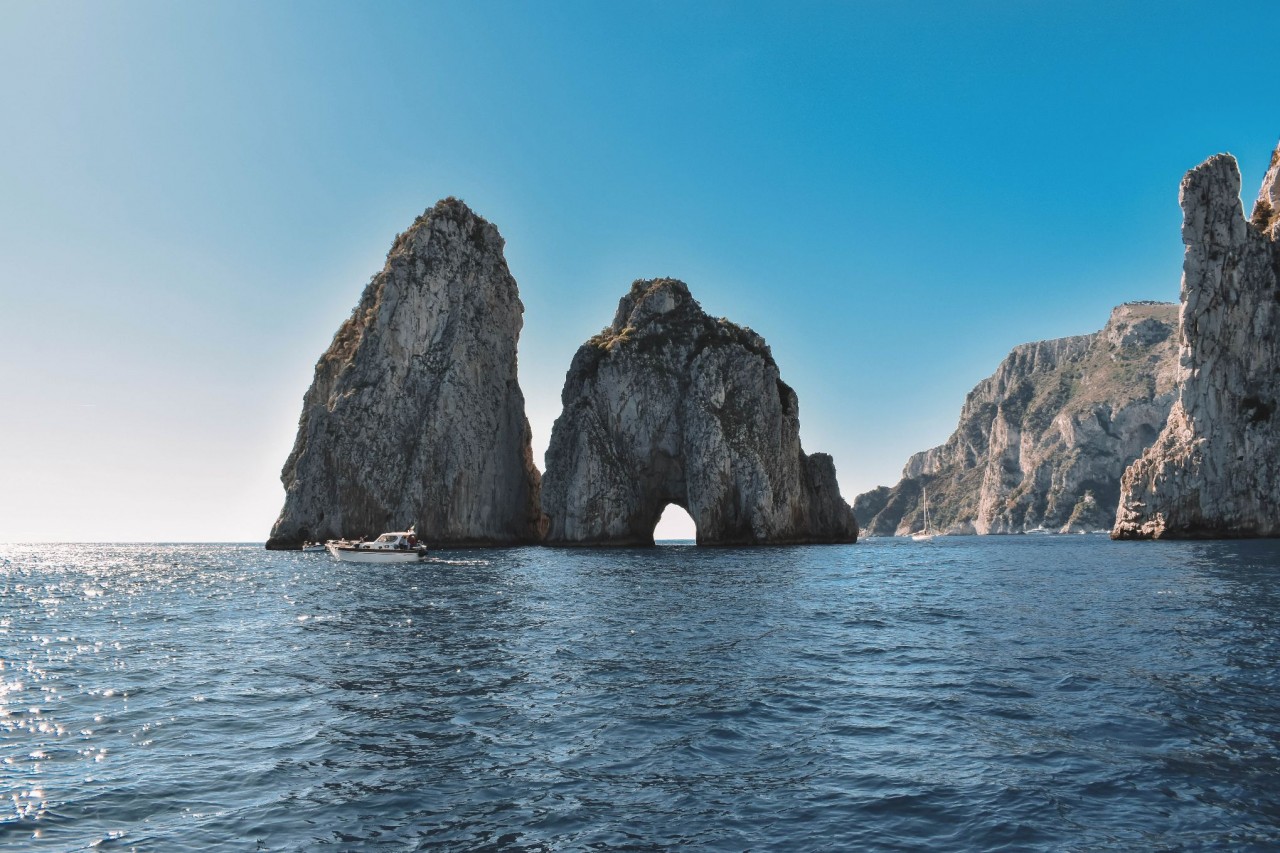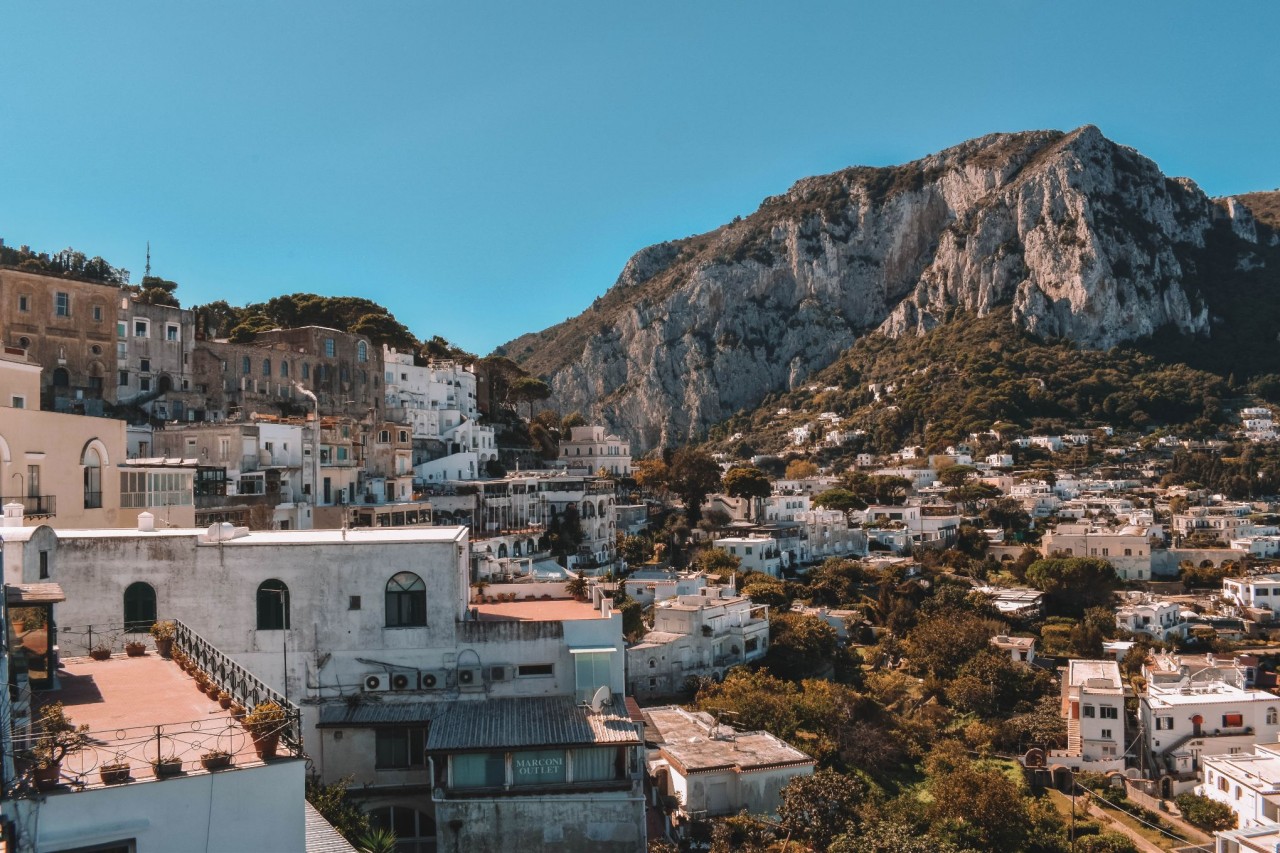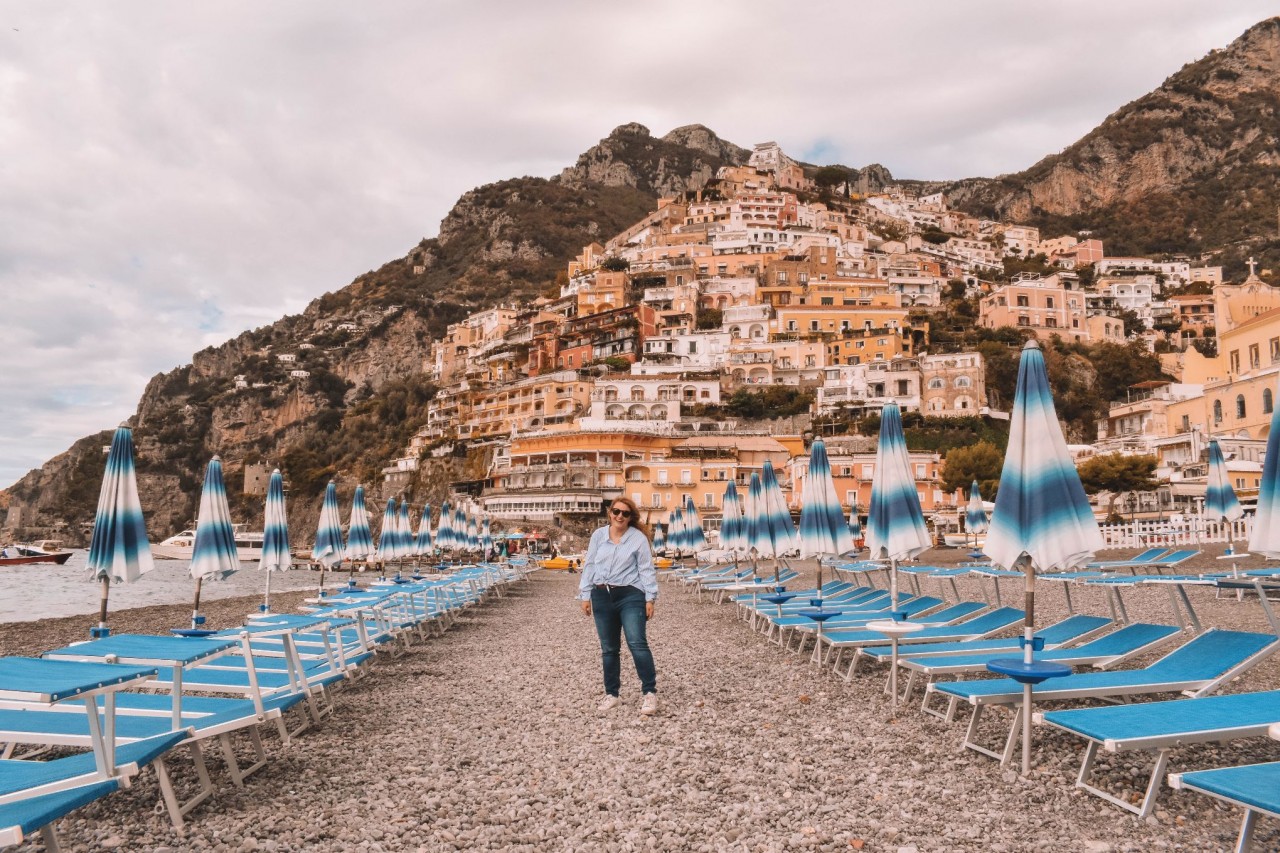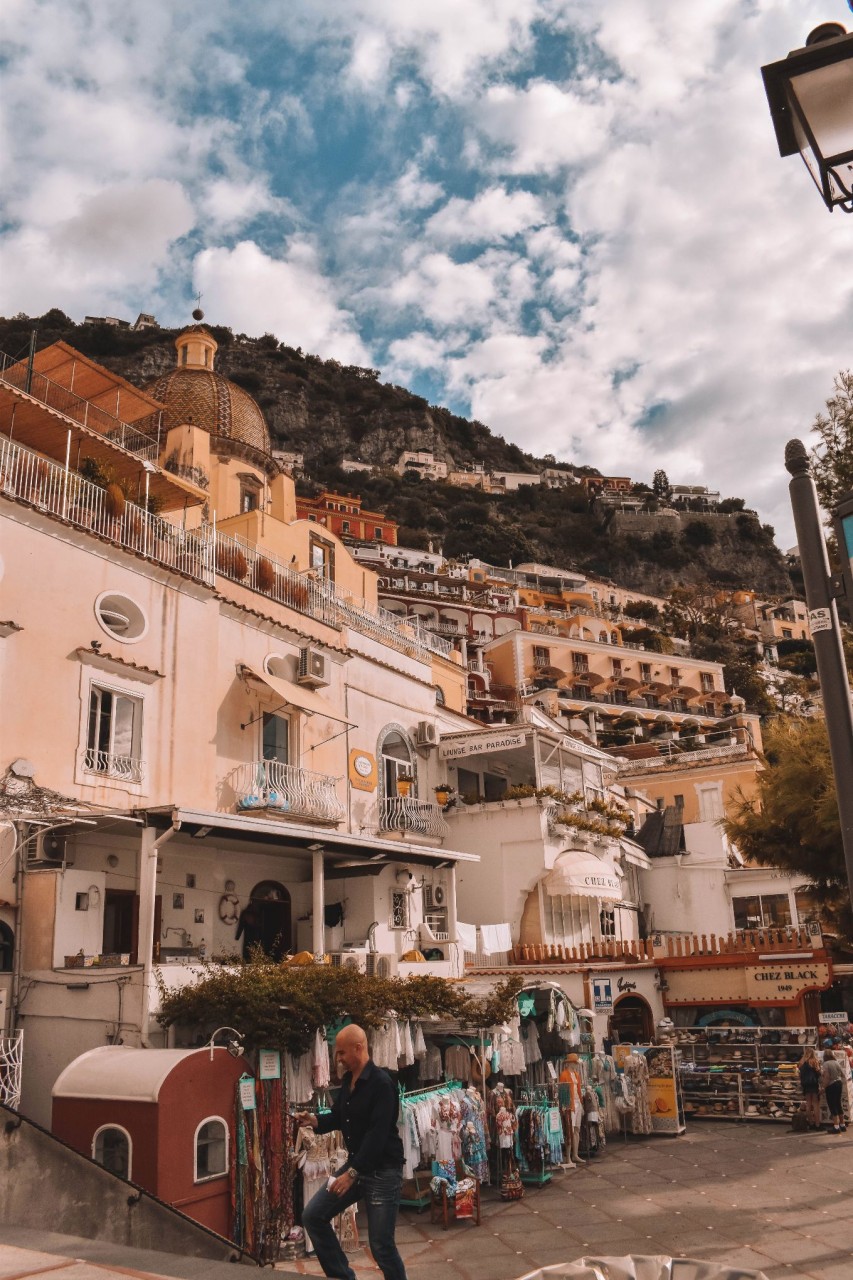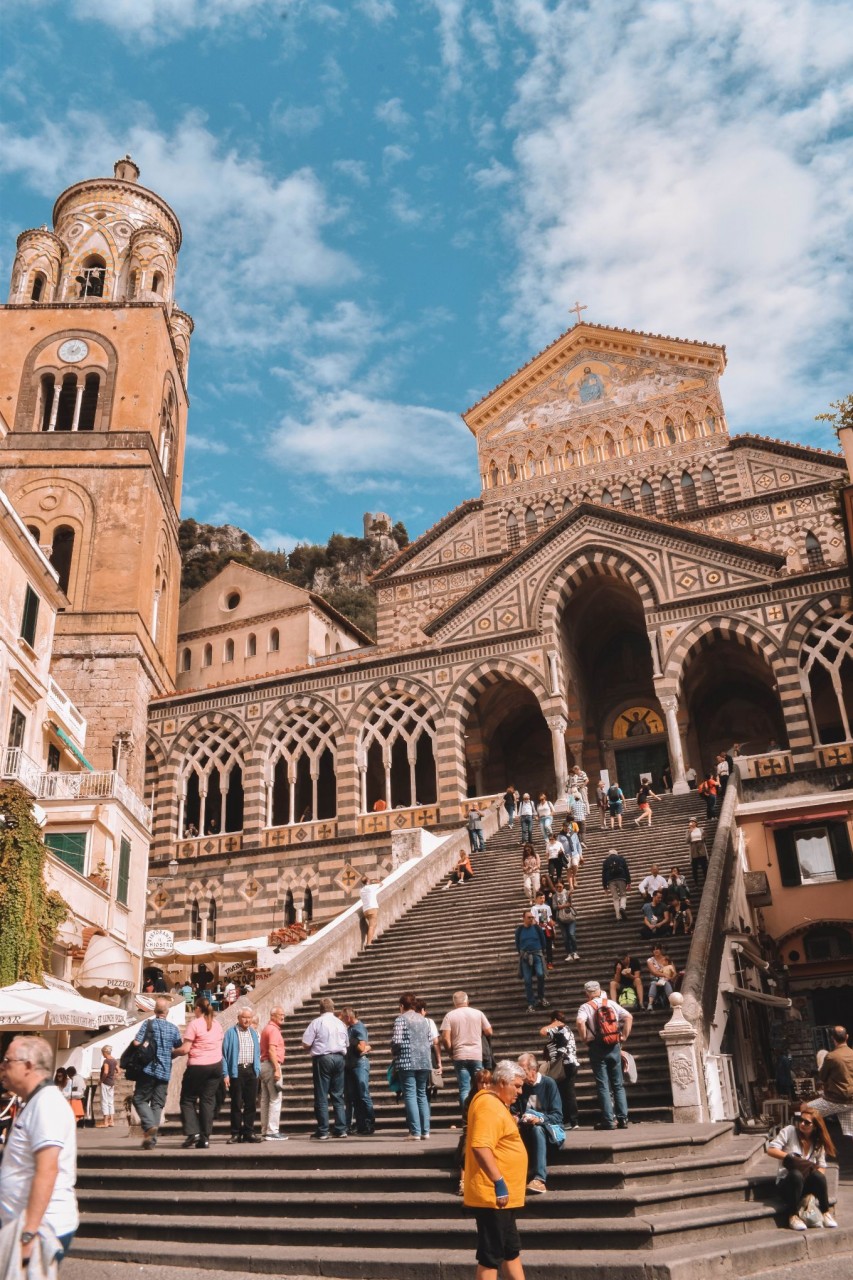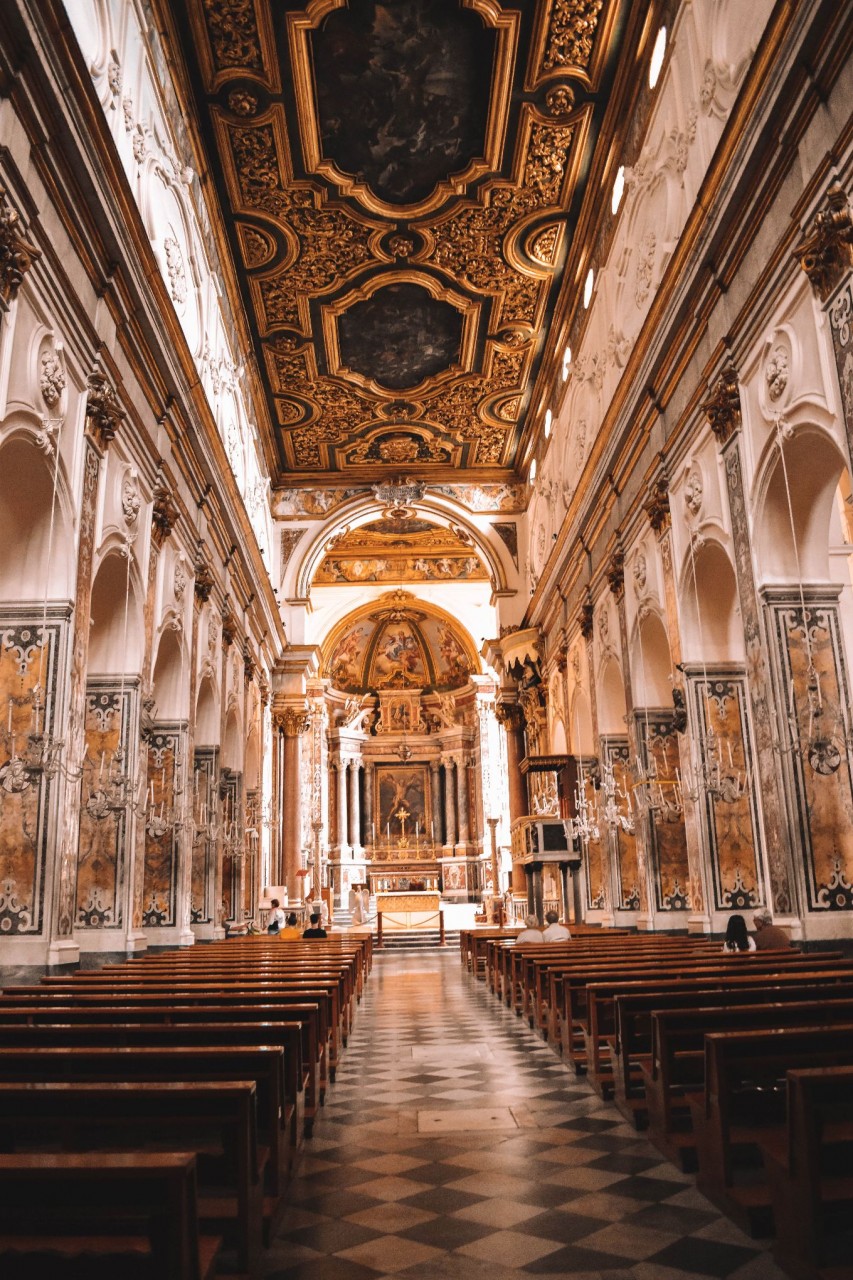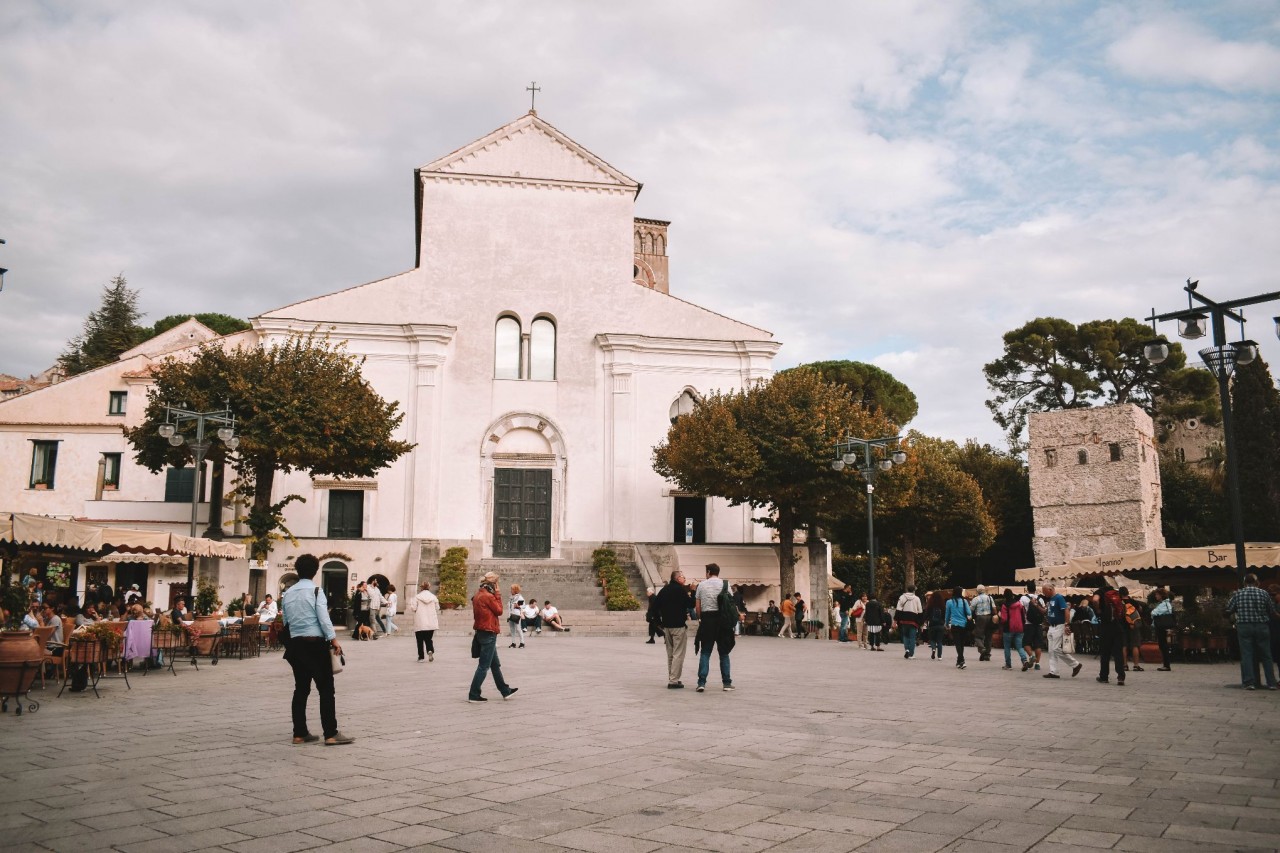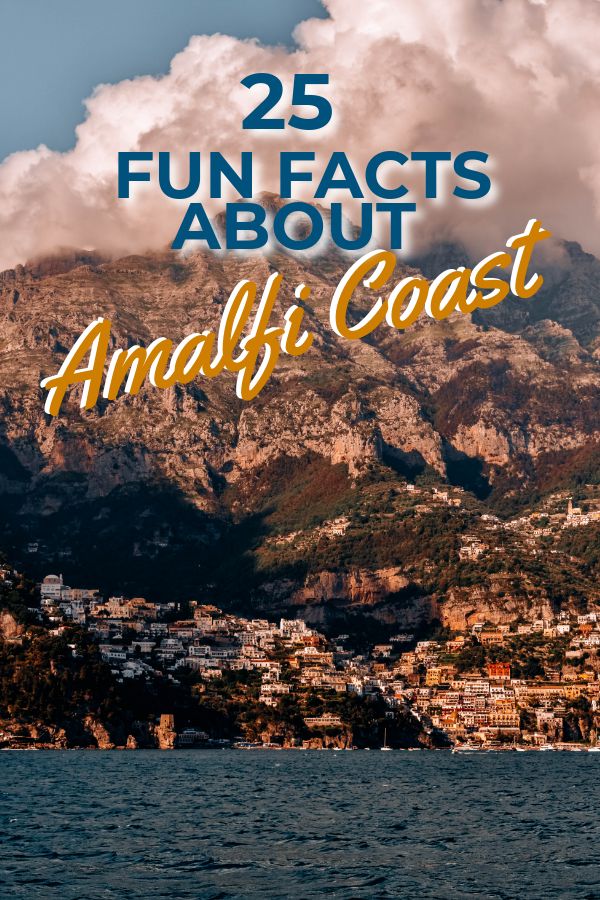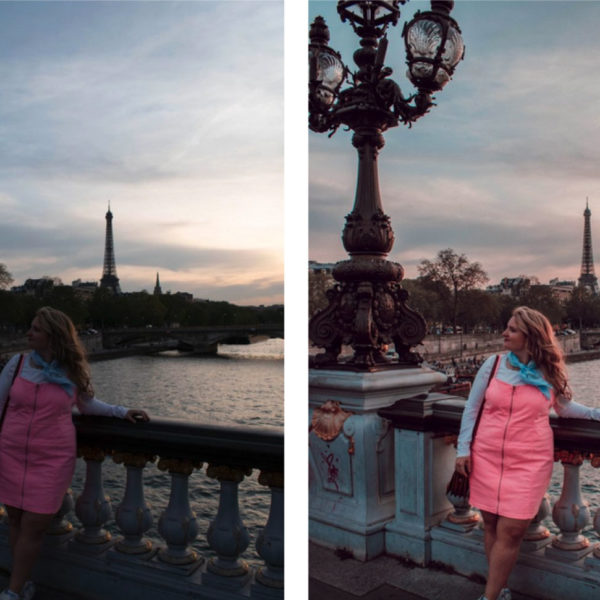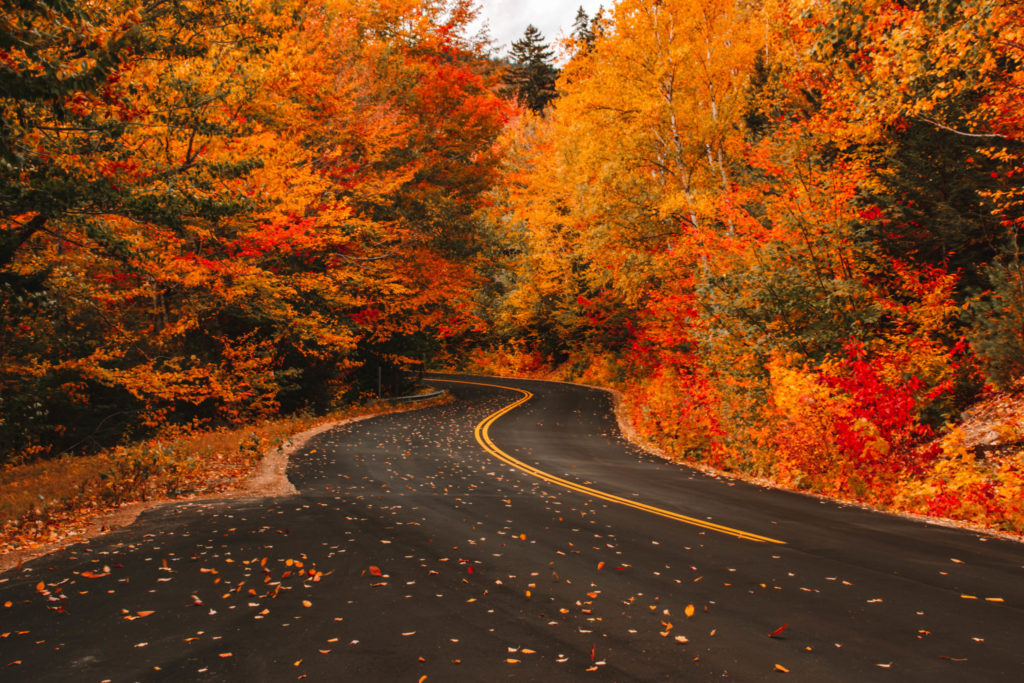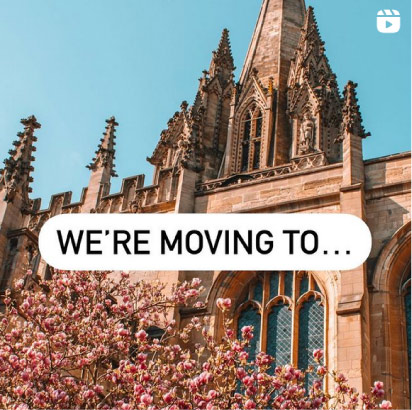Visiting Italy has always been one of my top bucket list to-dos. With awe-inspiring natural scenery, historic sites, vibrant cities, soaring mountains, beautiful beaches, and great food, Italy lures travelers from around the world. And even though there is no other place in Italy quite like Rome, for me, one of the best areas to visit in the country is the Amalfi Coast. Just south of Naples, the beautiful and unspoiled Amalfi Coast, dotted with small seaside towns, is a true Italian gem to see and be seen. Don’t make a mistake of coming here for just a day, though. Plan on spending at least four or five days to take in the highlights of this unique region of Italy. I guarantee, you’ll love every minute you'll spend here! I'm sharing how to perfectly plan a trip to the Amalfi Coast, Sorrento, and Capri. 
Below you can find a map of all the places discussed in this post:
[powr-map id=5bafbf73_1515658346]
Honestly, the Amalfi Coast can be a bit confusing: where should you stay? How should you travel around? Self-guided tour or package deal? In my experience, I believe you can do it on your own but booking a vacation package in the Amalfi Coast will ensure that you see it all. In order to get to Capri you need to take a boat. To really see Positano and the coast you need a car. I don't know if you've seen driving in Italy, but it's INSANE. That's why Monograms made so much sense to me. You get the benefit of a well planned but flexible trip complete with local guides. Check out my post on planning a stress free trip to Europe right here.
Getting to and around Amalfi
Depending on the time of year you're visiting, it's possible to take a ferry from Napoli to the main port of Amalfi. The journey takes two to three hours with stops in places like Sorrento and Capri. For those who can’t stomach a ferry ride, taking a Freccia Rossa train from the Napoli Centrale station to Sorrento is an inexpensive and comfortable alternative. If you prefer traveling by car, you can rent a vehicle at the airports in Rome or Naples. Just know that driving through the area can be hectic, so I recommend hiring a local driver or getting around by public transport. There are buses that run up and down the coast and you can catch a bus to pretty much any destination on the Amalfi Coast. No matter which means of transportation you choose, you are in for a scenic journey as you make your way from one gorgeous corner of the coast to another. I took a car over to where I stayed in Sorrento, and this was the perfect home base.
The Highlights of the Region
There are many reasons to enjoy visiting the Amalfi Coast, but one of the key factors was staying in Sorrento and visiting towns like Capri, Amalfi, Positano, and Ravello. These coastal gems attract thousands of tourists each year, making them the area’s top destinations. The dramatic views, delicious food, and great archaeological sites don't hurt either!
Sorrento
Our journey to the Amalfi Coast began in Sorrento, a charming little town that sits on the cliffs overlooking the Bay of Naples, Mt. Vesuvius, and the Isle of Capri. Many visitors use Sorrento as their home base from which to explore the full breadth of the region. And there’s a good reason for that. It’s hard to imagine a better location for wider explorations: the best of peninsula’s unspoiled countryside, the Amalfi Coast, the fabled Isle of Capri, Pompeii, and other archaeological sites are all easily reached from Sorrento.
Even though our ultimate goal was further afield to destinations like Capri, Positano, and Amalfi, upon our arrival we soon discovered that Sorrento deserved some attention in its own right. Lemon and orange groves, laid-back holiday air, old streets, and beaches coupled with amazing scenery – to me, that’s a recipe for success! Sorrento encapsulates everything I imagined the communities in southern Italy to be.
The town of Sorrento dates back to 600 BC, but it’s best known for its main produce – lemons and oranges. It was here, in Sorrento, that limoncello, Italy's most famous liqueur was invented (although it’s up for debate, since Sorrento, Amalfi, and Capri all claim its ancestry). Limoncello is a traditional yellow liquor made from lemon zest, water, sugar, and alcohol. It has an intense lemon flavor and can be enjoyed as an aperitif or a digestive. As a digestive, limoncello should be a darker color, lightly into the greenish color. To get a free tasting of limoncello, venture down Via San Cesareo, one of the shopping streets in Sorrento. There you’ll find several Limoncello shops where you can buy and get a free tasting of this traditional lemon-flavored liquor.
As you stroll the streets of Sorrento, you’ll see many interesting architectural pieces with a mixture of styles ranging from Gothic, Renaissance to the Arab influences. The ones to especially look for are the 16th-century Sedile Dominova “Noble Seats” – a loggia with painted frescoes, the 14th-century Correale Palace, and the unique 13th-century Veniero Palace. Another architectural and historic highlight not to be missed is the Sorrento Cathedral, a Roman Catholic cathedral dedicated to Saints Philip and James. In Piazza Tasso, the central square of Sorrento, you’ll find the Baroque Church del Carmine, Museum Correale, and monuments of Sant'Antonino Abate and Torquato Tasso.
If you have extra time I recommend taking a walking tour through the gorgeous chain of Monti Lattari (Milky Mountains). It’s name comes from the rich vegetation used for sheep, goats and cows. The milk produced in Milky Mountains is the best for buffalo mozzarella cheese. Buffalo mozzarella cannot be refrigerated, this is why you have to get it here.
You can also devote an entire day trip to Mount Vesuvius and Pompeii. It takes about 30 minutes on a path mostly made of ashes to walk up the top of Mount Vesuvius. The Volcano that buried several Roman settlements two thousand years ago can still erupt at any moment. There are around 2 million people that live in the vicinity of the volcano with no real plan to evacuate. The eruption can also cause a tsunami and there’s no way of telling how that can affect the coast. The ancient Roman city of Pompeii is buried under a thick layer of volcanic ash and the site is exhumed on a surface of 150 acres. The visit to Pompeii will require some walking uphill and some steps. Make sure to wear sturdy shoes because the surface is very rough from lava pebbles. If you are not willing to take the entire walk, there are many cafés and souvenir shops right outside the entrance of the trail.
One of the highlights of our stay in Sorrento was stumbling upon a charming little fishing village – Marina Grande. It’s a place with its own pace and traditions. The hard working fishing community here loves the sea and lives in symbiosis with it. Jutted out into the bay is a little restaurant Zi’Ntonio Mare where you can enjoy the authentic seafood perfection. Zi’Ntonio Mare has a great view, friendly staff, an amazing wine menu and the best food! Try the calamari, olive bread, Il pesce San Pietro or homemade pasta with seafood. It’s a true epicurean delight!
Another thing to love about Sorrento is souvenir shopping. There are plenty of little old shops where you can buy the ceramics, handmade lacework, and intarsio (fine wood inlay carvings) that are produced in the area. And, of course it’s a perfect place to grab your hand-crafted piece of cameo jewelry from an Italian master. You’ll find earrings, necklaces, bracelets, pendants, and rings in the cameo style. To make sure you’re buying an authentic cameo piece, hold it up against a bright light. If your cameo is carved out of shell, you should be able to see through it and make out the entire silhouette of the design.
Capri
A short ferry ride from downtown Sorrento is one of the top destinations on the Amalfi Coast – the dazzling Isle of Capri. And dazzling it is: its hedonistic charm grabs hold the moment you step off the ferry. From the uphill town of Anacapri on one side of the island, to Capri town on another, this impossibly charming destination has much to offer.
Capri is a bustling town almost entirely given over to tourism. Most of the walking around Capri is past designer boutiques, luxury hotels, and restaurants. But explore beyond and you’ll discover that Capri is full of unique natural wonders. Venture through the Via Camerelle to Via Tragara and the Via Matermania and follow the signs leading to the Natural Arch – the monument made of rocks. Natural Arch is a highly recommended tourist attraction, frequently seen in paintings. The view up here is absolutely breathtaking! And the best part of it is the world famous azure sea which gives Capri its name – the Blue Island.
Close to the center of Capri are the Augustus Gardens, made up of a series of flower-decked terraces overlooking the Bay of Marina Piccola to the right and the Faraglioni to the left. Just outside of Augustus Gardens is the Carthusia perfume shop. If you want an authentic souvenir to bring home from Capri, Carthusia shop is the place to go. The visit to the shop will educate you on the legend of the very first perfume of Capri, made by Carthusian monks. The old tradition of perfume production is perpetuated to this day, the same methods are still used to produce the perfume. The finished product is hand-wrapped and makes for quite a lovely gift.
We took a boat ride to get a better view of Capri and see the famous Faragilioni rocks. You might remember it from the Dolce & Gabbana ads, but the iconic rock formations stand on their own in the sea. If you kiss under the small arch while you pass you have good luck. When you take a boat ride you also have the option to visit the various grottos around Capri. We visited some like the green and red but fair warning, we didn't make it to the most famous Blue Grotto. The Blue Grotto is one of Capri's biggest attractions and it's not cheap to go and take a look. You take a small boat to go inside the grotto and then you'll go into a sea cave with an eerie, somewhat mystical, blue reflection that illuminates the cave. The line is hours long and you get about 5 minutes to boat in, take a peep, and move on out. For many, it's worth it but I despise waiting in line so I opted out.
To experience the more authentic side of the island, head over to Anacapri. It is about 3 kilometers away from Capri town and it takes about 10 minutes to get there by bus. The landscape in Anacapri is wild with rocky terrain and groves of pines and Mediterranean brush. There are no beaches here, just beach clubs on rocky cliffs. Instead of nightlife, you’ll find walking and hiking trails in peaceful surroundings and luxury boutiques give way to artisan workshops. As you explore the center of Anacapri, you’ll walk past small tailor shops, quaint souvenir stores, artisan shoemakers, and local women sitting on porches in the shade knitting.
Touring the Amalfi Coast
After spending time in Sorrento and Capri we made plans to tour the Amalfi Coast. The best way to do this is hop on a tour bus to see it all. The towns dotting this area are Positano, Amalfi, and Ravello, as well as a few others. The best part about having a guide is you can easily stop and see each spot along the way.
Positano
As we took a drive through the Milky Mountains we found ourselves in a beautiful coastal town of Positano. With its steep geography and vertiginous houses that tumble down to the sea in colorful cascade, Positano is the star of the Amalfi Coast. Since the first half of the twentieth century Positano has been attracting large numbers of tourists who come here for sunny weather, azure sea, stunning views, and overall southern Italian charm.
One of the best ways to experience Positano is to situate yourself in a hotel at the edge of town. Il San Pietro di Positano, the upscale hotel sculpted into the cliffs overlooking the bay of Positano, features terraced ocean front suites, rare botanical gardens, private beaches and the Michelin-starred Zass restaurant where you can experience the flavors of the sea. A boat tour is another great way to get a better sense of the Positano’s stunning geography. There’s plenty of good companies, like Positano Boats, to choose from, plus you can contact a local tour operator directly and have them arrange a day at sea for you.
For souvenir and gift shopping, check out the many shops selling locally crafted goods. One of the most popular things to buy in Positano is handmade sandals. The two boutiques to go sandal shopping at are Safari and La Botteguccia Di D'Antonio Diodato. You’ll find dozens of different styles here and can even get a made-to-measure footwear that usually takes a couple of days to produce.
Amalfi
Our next stop was at Amalfi, the town which lends its name to the entire coast. Rich in history and culture, Amalfi is the main municipality of the Amalfi Coast, extending itself over 50 kilometers from Vietri sul Mare to Positano. Amalfi is a famous touristic center and the most heavily frequented by travelers. One of the reasons for that is the fact that Amalfi is a major intersection for nearly all modes of transportation carrying travelers between islands and towns. The crowds here can be overwhelming, but visiting the architectural treasures like the Cloister of Paradise, the 9th century Duomo di Amalfi, and the Medieval Cathedral of Saint Andrew, was worth it despite the crowds.
Speaking of Saint Andrew, there’s a festival held in the town of Amalfi on the 27th of June commemorating the miracle that happened on the same day in 1544 when St. Andrea saved Amalfi from the attack of a Saracen fleet. There’s a procession that takes place during the festival with a silver statue of St. Andrea being carried through the town’s streets. The most spectacular part of the festival is when the carriers of the statue run up a long stairway in less than thirty seconds while the marching band plays music and the people shout and clap their hands. It’s truly an experience like no other. If you want to remember your trip to Amalfi, St.Andrea Festival is an event not to miss.
As you take a stroll around the town’s cobbled streets to the seaside square, you’ll see a famous Statue of Flavio Gioia. It can be found in the center of the round-about by the coast. From the square you can enjoy the beautiful views of the rugged green hills and azure waters. If all the walking makes you hungry, be sure to stop at one of the small pastry shops to enjoy some local pastries that are made on site. Or venture over to a cafe for a taste of a locally procured fish-based gourmet dish and a sample of the legendary limoncello.
Ravello
We headed last to the peaceful and serene Ravello. This charming little town sits high in the mountains, 350 meters above sea level, offering stunning views of the Amalfi Coast and the Bay of Salerno. Apart from great vistas and natural beauty, Ravello is famous for two magnificent garden estates. The romantic garden of Villa RufoloI, which famously served as an inspiration for Richard Wagner’s opera “Parsifal”, and Villa Cimbrone with its extravagant gardens, proclaimed by a famous writer Gore Vidal to be the most beautiful place ever visited. Villa Cimbrone estate offers great views looking over the Amalfi Coast, and at the end of the garden is the Terrace of Infinity – the best spot on the entire coast for photographers, dreamers, and lovers.
Ravello is also home for Amalfi Coast's most beautiful cathedral, the 11th-century Duomo di Ravello. Don’t let its plain-looking white façade trick you into thinking that it’s not worth checking out. Step inside and you’ll immediately get a sense of the splendor as you see beautiful mosaics, richly decorated spiral columns and many fascinating works of art from the Middle Ages.
Just across a pretty valley from Ravello lies the oldest village of the Amalfi Coast – Scala. If you are interested in hiking, exploring, and experiencing daily life on the coast, Scala is the place to be. Take a hike up in the mountains and you will spot the remains of the medieval walls that protected the village during the Middle Ages. Scala was once an important outpost of the Republic of Amalfi and the evidence of the town’s prominent past can still be seen in the faded palazzi and a grand 12th-century Duomo of San Lorenzo. We had a quick stop here for lunch and missed some of the crazy tourist scrambling in the more crowded towns.
To relax and refuel after all the touring, we stopped at Piazza Vescovado, which is pretty much the beating heart of Ravello. There’s a handful of quaint bars, like Caffe Duomo, where visitors stop for drinks and icy treats like gelato or granita. You can also have something more substantial like a panini or a quick pasta and enjoy a cup of good, strong espresso or limoncello.
From Sorrento to Ravello, the Amalfi Coast is a destination where a magical time, amazing adventure, and unforgettable impressions are guaranteed. After spending a week on the coast, I now understand why this beautiful spot of Italy has been drawing visitors since the time of the Roman emperors. It’s incredible how the unique qualities that attracted people to the region 1,600 years ago are still here today, waiting for you to discover.
My trip to Italy was a project managed by iambassador in partnership with Monograms Travel and other sponsors. Helene in Between maintains full editorial control of the content published on this site.


